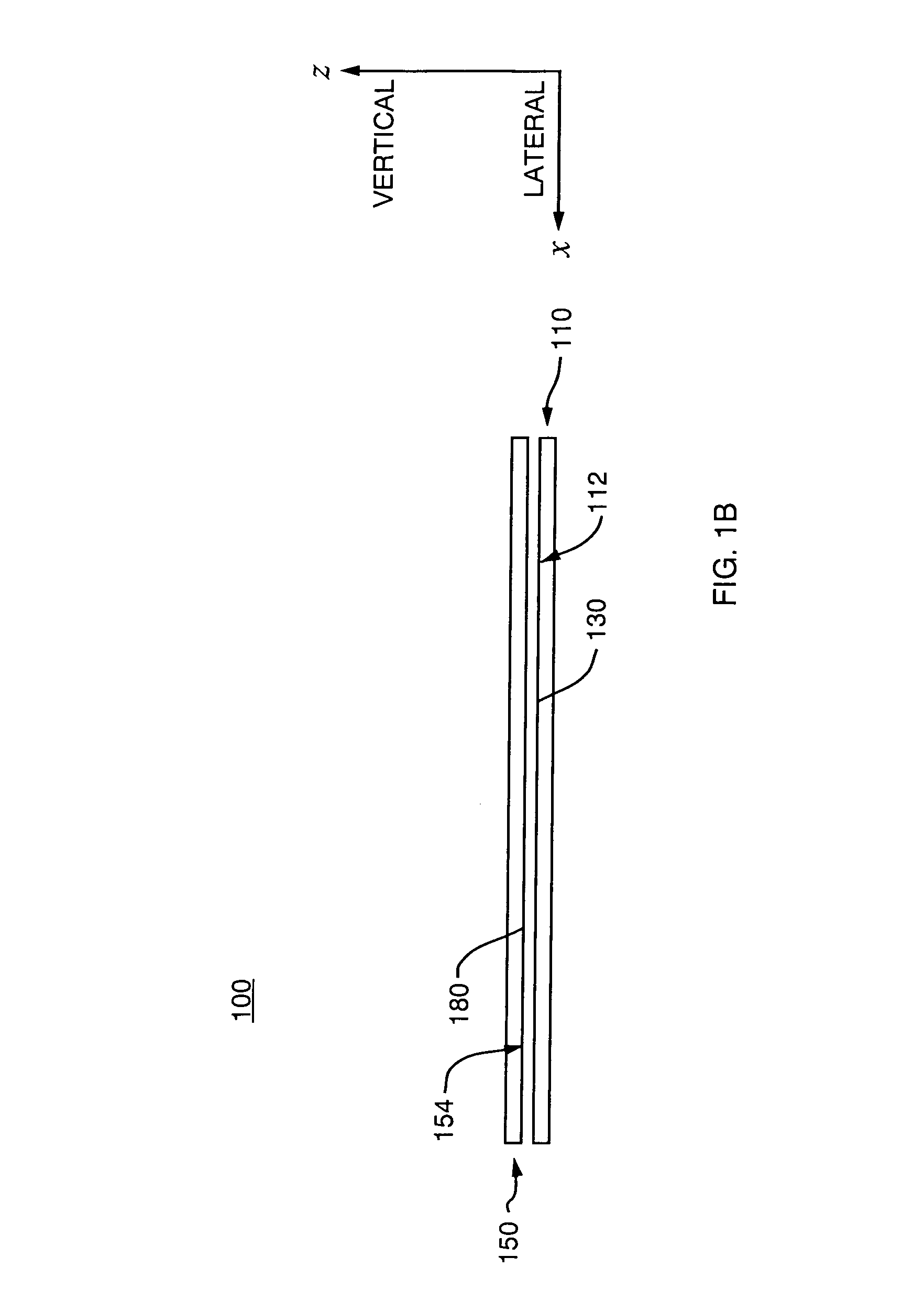Multifunctional periodic cellular solids and the method of making thereof
a multifunctional, cellular solid technology, applied in the direction of paper/cardboard containers, knitting, weaving, etc., can solve the problems of not often designed to simultaneously not often designed to provide fluid throughput (i.e., transportation), and not often designed to provide a high rate of load support and energy absorption. , to achieve the effect of high convection heat transfer, efficient load support, and excellent mechanical impact energy absorption and vibration suppression potential
- Summary
- Abstract
- Description
- Claims
- Application Information
AI Technical Summary
Benefits of technology
Problems solved by technology
Method used
Image
Examples
example 1
Construction of 8-Mesh and 16-Mesh Nichrome Cellular Structures
[0113]Twenty-two (22) laminae of plain square woven 8-mesh nichrome cloth (Newark Wire Cloth Co., Newark, N.J.) with 0.635 mm (0.025 in.) diameter wires and a 2.54 mm (0.100 in.) opening width, were used as textile layers for the constructing the 8-mesh nichrome cellular structure.
[0114]Twenty-two (22) laminae of plain square woven 16-mesh nichrome cloth (Newark Wire Cloth Co., Newark, N.J.) with 0.508 mm (0.020 in.) diameter wires and a 1.080 mm (0.0425 in.) opening width, were used as textile layers for constructing the 16-mesh nichrome cellular structure.
[0115]To join the textile layers together, all of the 22 nichrome cloth laminae were first submersed into a polymer based cement (NICOBRAZ CEMENT 520 supplied by Wall Colmonoy Corp., Madison Heights, Mich.). They were them coated with −140 mesh (diameter<106 mm) Ni-25Cr-10P braze alloy powder (NICOBRAZ 51 supplied by Wall Colmonoy Corp.). The solids and liquids of thi...
example 2
Density and Surface Area of 8-Mesh and 16-Mesh Nichrome Cellular Structures
[0116]The 8-mesh sample had a density of ρ=1.43 g / cm3. Using ρs=8.30 g / cm3 for nichrome, the corresponding relative density, ρ / ρs=17%. The topology of the 17% dense laminate can be shown with the benefit of the illustration of FIGS. 3A-3B. Aligned square pores (square geometric configuration) were obtained in one direction for efficient cross flow with low flow resistance. In the other two directions, the pores assumed a diamond like shape. A large surface area to volume ratio was achieved. An approximate surface area density of 989 m2 / m3 was determined using equation (10).
[0117]The 16-mesh sample had a density of ρ=2.54 g / cm3. Using ρs=8.30 g / cm3 for nichrome, the corresponding relative density, ρ / ρs=31%. A large surface area to volume ratio was achieved. An approximate surface area density of 1,978 m2 / m3 was determined using equation (10).
example 3
Material Properties of 8-Mesh and 16-Mesh Nichrome Cellular Structures
[0118]As shown in FIGS. 13A-13F, cellular structures were compression tested in ambient (25 degrees C.) at a constant crosshead displacement rate of 0.005 mm / s using a screw driven testing instrument. A knife-edge extensometer of 10-mm and 10-mm contact was epoxy cemented to the center of one side for local strain measurement at low and intermediate strains. The displacement of the crosshead determined the fall sample strain. Illustrations before, after and at a 5% strain increments during the test recorded the deformation on the side opposite the extensometer.
[0119]The compressive stress-strain behavior for the 17% dense (8-mesh) laminate is shown in FIGS. 10A-10B. Referring to the low strain behavior graph 1002 of FIG. 10A, during initial loading, a linear elastic behavior with a Young's modulus of E˜(i.e., approximately equal to) 15 GPa was recorded. At a strain of ε˜0.04%, the linear elastic behavior ceased an...
PUM
| Property | Measurement | Unit |
|---|---|---|
| Young's modulus | aaaaa | aaaaa |
| Young's modulus | aaaaa | aaaaa |
| yield strengths | aaaaa | aaaaa |
Abstract
Description
Claims
Application Information
 Login to View More
Login to View More - R&D
- Intellectual Property
- Life Sciences
- Materials
- Tech Scout
- Unparalleled Data Quality
- Higher Quality Content
- 60% Fewer Hallucinations
Browse by: Latest US Patents, China's latest patents, Technical Efficacy Thesaurus, Application Domain, Technology Topic, Popular Technical Reports.
© 2025 PatSnap. All rights reserved.Legal|Privacy policy|Modern Slavery Act Transparency Statement|Sitemap|About US| Contact US: help@patsnap.com



